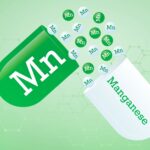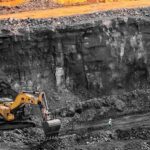
Gold mines in Guinea
A complete guide to tokenized gold mining – How to buy a fractional share of gold mines in Guinea
The tokenization of minerals like gold, iron ore, and oil is taking the investment world by storm. It allows people from all walks of life to claim a fraction of ownership in the form of digital tokens in some of the world’s most precious metals and minerals.
In this article, we explore how the tokenization of gold mines works, specifically relating to tokenized gold in the West African country of Guinea. Join us as we explain the process of mineral tokenization and show how this could be a viable investment strategy if you’re looking to buy a fractional share in gold this year.
Tokenized gold mines – how they work
To grasp the opportunity that investing in Guinean gold mining presents, we first must explain how the process of tokenization works. Simply, tokenization converts the ownership rights of a real world asset – like a gold mine – into digital tokens, which can be traded on a digital platform.
The tokens are created and maintained on a blockchain, meaning they are immutable, tamper-proof, and highly secure. As a result, investors can now buy fractional shares of gold in the form of digital tokens, which are underpinned by physical gold reserves.
The trade of these tokens is facilitated by self-executing smart contracts, which are processed instantly in a safe and secure way that makes buying and trading digital tokens effortless for every investor.
Tokenized gold is part of the wider tokenization of minerals popular among crypto investors, with other precious metals, natural gas, and oil all tokenized and traded in the same way.
The pros and cons of investing in tokenized gold mines
The biggest advantage to tokenizing gold is that it breaks down the traditional barriers to entry. Rather than being reserved for the super rich and powerful, gold mine investments are now available to anyone with a digital wallet and an Internet connection.
Investors in West Africa and other parts of the world can now buy a fractional share in the gold mines within their country, which is democratizing and revolutionizing the entire supply chain. Below is an overview of the pros and cons of investing in tokenized gold mines, before we look at an overview of gold mining in Guinea more broadly:
Pros
✅ Tokenized gold mines provide access to gold investments to a huge number of people. This ensures that people from all backgrounds have the chance to buy a share of the wealth that is being created in these countries.
✅ The process of tokenization enables fractional ownership of gold mines and other precious metals. As a result, investors can get started with much smaller amounts, diversifying their portfolios from the very start without worrying about prohibitive barriers to entry.
✅ Tokenized gold delivers liquidity into the market, as it is much easier for investors to trade their fractional shares. Tokenized gold and other minerals can be bought and sold on lots of cryptocurrency exchanges, making it easy for people to take advantage of market highs.
Cons
❌ Perhaps the biggest risk attached to investing in tokenized gold is the volatility in the price of gold itself. This is nothing new to mineral investors, so being aware of gold’s volatility and diversifying your investment portfolio accordingly is important.
❌ At present, there is unclear regulation and licensing in regard to tokenized digital assets. Changes in regulatory requirements could limit the liquidity of digital tokens and may even make them unavailable in certain countries in years to come.
❌ Though the tokenization process is inherently secure, there is a risk relating to smart contracts, which are potentially vulnerable to bugs and errors. When smart contracts fail or make errors, it can be difficult to rectify the process due to their self-executing nature.
Gold mining in Guinea – an overview
As you can see, buying fractional ownership of gold in Guinea is highly appealing to many investors in Africa and further afield. But what is the current state of the gold mining industry in Guinea as a whole?
Statistics show that Guinea is the 23rd largest producer of gold in the world, with mines in different parts of the country. Gold is mined in Guinea alongside other precious metals and minerals like bauxite, iron ore, and diamonds, with numerous domestic and foreign companies involved in the extraction process.
Currently, 5 gold mining projects are in operation in Guinea, with 10 more projects under development. Gold is second only to bauxite in terms of the number of projects underway and planned in the country in 2024.
The role of gold mining in Guinea’s economy
Many of Guinea’s gold mines are located in the northeastern part of the country*. In 2011, it was reported that Guinea produced approximately 15,695 KGs of gold, with most of it coming from the Lefa mine in the Faranah region. Operated by Bellzone Mining, Lefa is one of the biggest gold mines in West Africa.
Though more recent statistics aren’t currently available, the mining industry accounts for approximately 17% of Guinea’s GDP (2010) and more than 50% of the country’s exports. It’s clear that like many African countries, Guinea relies heavily on gold and mineral mining, which isn’t likely to change in the near future.
With many of the country’s 12,000,000+ population living on less than one dollar a day, there is hope that the rich mineral resources of the country can deliver systemic change in the coming decades.
There’s no doubt that alongside other measures, the tokenization of the gold mining industry, as well as that of other precious metals, could help everyday people enhance their incomes and improve their livelihoods as a result.
How to buy tokenized gold mining shares in Guinea
The good news is that tokenized gold mining shares in Guinea are becoming more and more available. To buy shares, you should start with research. As mentioned, there are five current gold mines in operation, with a further ten planned. It makes sense to research these mines and the companies that operate them.
With an understanding of the gold mining landscape in Guinea, you can head to a crypto exchange platform to buy tokenized gold. This helps you to avoid particularly unscrupulous companies and is a good way to find mining operations with strong ESG credentials.
You can then add your digital tokens to your digital asset investment portfolio, which you can then diversify further with investments in other minerals in Guinea and further afield.
Conclusion
Tokenized gold is already democratizing the investment and mining landscapes in Guinea and further afield. But it also has the potential to transform livelihoods and help people all around the world buy a fraction of this highly valuable real-world asset.
Though many people in Guinea today remain poor, the potential of gold, iron ore, and bauxite to transform its people’s fortunes is immense, and we believe that digital assets will be at the heart of this process.


